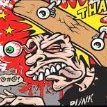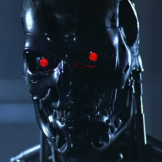Leaderboard
Popular Content
Showing content with the highest reputation on 10/06/2021 in Posts
-
12 points
-
The Forgotten From Wikipedia, the free encyclopedia The Forgotten Motorcycle Club (FMC) is an outlaw motorcycle club originating from Eugene, Oregon in the United States of America. It allegedly has its roots as early as the late 1940s as a riding club for veterans of the 41st Infantry Division. It then was officially established in January 1979 by senior members of the riding club. History The Forgotten MC was formed on the 16th of January, 1979, in Eugene, Oregon a few years after the end of the Vietnam War. However allegedly the MC tracks its origins all the way back to the late 1940s and early 1950s as a riding club comprised of post-WWII veterans primarily out of the 41st infantry who struggled to find work and structure in American society. The name seemingly inspired by that very feeling of abandonment amongst veterans. At some point in the early to mid-1980s the club transitioned from a club exclusively for veterans into a more open door policy and a 1% club after being allowed the diamond by a bigger club in their home state of Oregon. As the doors opened to most interested the club began to grow in size, making their second chapter in Oregon in 1987 and by the late 1990s and beginning 2000s the Forgotten MC had several chapters in Oregon. In 2010 the club then expanded into San Andreas with their first chapter in San Fierro, San Andreas and by 2021 they made the leap to set up a chapter on the edge of Los Santos in the little town of Paleto. Membership Somewhat uniquely for its time the Forgotten MC never has officially made by-laws in regards to race or religion. That said it has historically been a predominantly Caucasian Americans of Christian heritage that has been amongst its membership. References 1. ^ Nielsen, Norman (October 22, 1953) Memoirs of Gordon Nielsen 2. ^ Justice, Robert A. (June 4, 1998) The Forgotten of the 41st. The Oregonian 3. ^ McCartney, William F. (1948). The Jungleers: A History of the 41st Infantry Division. Washington, D.C.: Infantry Journal Press. ISBN 1-4325-8817-6 4. ^ Rosicky, Lewis. (March 9, 2012) Bikers in San Fierro. San Fierro Chronicle 5. ^ Moore, Lindsey. (August 28, 2015) Interview with Carl Cleveland. San Fierro Chronicle11 points
-
8 points
-
6 points
-
6 points
-
1. Understanding the influence of pop culture on a biker: What a lot of people forget to portray about Motorcycle Club members, is that they are influenced by pop culture, like any other person. Bikers' are very much influenced by the era, and while this means they probably aren't likely to rock Kanye's newest clothes, they are still in 2021, and aren't likely to act as if they're still in the 70's. One of the things I often see is the heavy metal cliche, as I'll call it. Clad out leather jacket, ripped up jeans, and large combat boots. What people have to understand is that there is no dress code for a biker underneath his cut. If your character wants to dress like that? That's cool. But don't think you have to portray that. What you'll often see nowadays is standard t-shirt/hoodie, jeans, and a pair of casual shoes. Bikers like to be comfortable, just like you or me. You're not gonna wear a leather jacket in the melting heat just because you think it looks cool, and neither is a biker. The exception to this is your cut, which doesn't actually really inconvenience you in any way. What you see above is typical Motorcycle Club member clothing. A t-shirt, jeans, and shoes and accessories. It's 2021, and while older bikers will wear less stylish clothing, they're still not likely to dress as if it's winter in New York. The truth is, you wouldn't be able to pick out a biker from a regular civilian nowadays if it weren't for the patch, and the tattoos. So that's one part of understanding the pop-culture influence on the MC world. Secondly, is the music. Heavy metal, Rock n' Roll, have, and always will be heavily influential in the MC scene, but that's not all there is to it. Rap and hip-hop have also become a major part of it, too. This is most evident in Hells' Angels MC rapper, Mike P. the big homie, a fully patched member of a California charter. If you search up biker rap, there's actually quite a few rappers from the MC scene. Notably Mike P, and Sean P. So, understanding this is vital to portraying a modern MC biker. The cliche of bikers turning in disgust at rap music is so inaccurate. In saying this, if your character doesn't like rap or hip hop? That's cool, everyone has their tastes - but don't think that it's a must for biker portrayal. In fact, I'd say in 2021, you'd be hard pressed to find a younger generation biker that doesn't get down to some form of rap music or hip hop. 2. Understanding the lifestyle: Obviously bikers are individual people. They come from different walks of life, and all have different motivations for wanting to be in that lifestyle. But what people also have to realize is that there's different types of bikers that all co-exist within a club. You've got your poor members, who probably ride a shit-box of a bike, and you've got your family members, who have wives and kids, and on top of that you have your money-makers, the one's that'll be riding the newest Harley, sporting a whole bunch of bling, and enjoying the spoils of war. Either one you want to portray is fine, but don't feel that you have to roleplay the same biker that other faction members may be portraying. Bikers aren't expected to share their wealth with their brothers. Just because your characters good with his money, doesn't mean he should be shunned or deemed as not being a real outlaw. The fact is, if you were making thousands of dollars a week through whatever means, then wouldn't you be wearing a nice necklace, some rings, and fresh clothes? The cliche people seem to fall on is that bikers are poor. But most actually work jobs, or make a lot of money off of business, and a part of their intimidation factor is flaunting that. Portraying a drug addict biker passed out in a crackhouse is acceptable, but it's not the norm of the biker community. Is there members like that? Of course. But it's not the majority. A lot, you'll find, live in a house, and may have families, and while they aren't living like the Kardashians, they'll probably have a nice leather sofa and a flatscreen TV if they're playing their cards right. There is also the element of trailer-trash bikers, and they are common too. So, when portraying a biker, pick a lifestyle choice to start off with, and roll with it. Maybe your character goes broke and has to downgrade, or maybe he started at the bottom and he works his way up, or possibly he keeps going steady and maintains his lifestyle, it's up to you and what you want out of your development. But don't feel like every MC needs to be in a trailer park together. The family aspect of clubs is also something that needs to be addressed. Many have wives and kids, or steady girlfriends, and some have baby mamma's all over the place. Again, everyone has their own personal lives. But, above all, the majority of bikers' put their club over their family, and that can create a lot of tension. However, most girlfriends and wives are down for that life, too. And understand what they're getting into when they get with their men. Obviously friction may occur if your character has started a family and then joined a club, but again, this isn't a cliche you have to feel the need to stick to. Your character can have a perfectly happy home life, whilst being a member of an MC, like any couple would. 3. Motorcycles and cars: I've already addressed how the lifestyle of a character and their wealth influences their choices of vehicle, so this will mostly focus on accurate portrayal of a bike, and your characters cage. The days of riding old, make-shift choppers are dying out, and the age of Dyna's and Road Kings are in. If you wish to portray an old, beaten up chopper, then that's cool too, maybe your character likes that bike and wants to use it. But like anything, you want to be comfortable, while looking good. A common expression for modern bike customization is to be "thugged out", this is usually in reference to blacking out your engine, putting apes or t-bars on, but maintaining that comfortably to ride. Touring bikes are common, because they look good, but are also nice and easy to ride. No one wants to be riding a bike that they have to worry about falling apart on them. In saying that, there are those who ride custom bikes to the fullest. Choppers, and Bobbers, are still common in the MC scene, however you'll usually find that the members have a back-up touring bike for long rides, whilst those bikes are more for showing off in the city and on short rides, or bike shows. Baggers and Dyna's are the norm, especially if portraying a modern biker in the Los Santos environment which is heavily influenced by Los Angeles and California. Also, don't be afraid to ride a stock bike. Don't wanna ride something with giant apes and custom wheels? There's no shame in roleplaying a character that has respect for the original Harley Davidson looks, and keeps their bike standard. Secondly, cars. Too often do I see the stereotype that every biker has to be on their bike 100% of the time. Don't get me wrong, they love to ride, and they'll do it all they can, but don't be afraid to jump in your car if it'd be impractical to be on your bike. Second to this, don't be afraid to drive a modern car. You don't have to drive a Walton, or a cheap, piece of shit car that can barely go anymore. If your character has the wealth to drive a nice car, then drive one. Why would he be driving a 1983 Ford, that's spitting smoke when he has the wealth to drive a new Escalade? Again, however, this is all down to your characters wealth, and where you want the development to lead. If you want to drive a Sultan, or a Huntley, go ahead. Just make sure it's realistic of your characters wealth and status. Obviously a dead broke heroin addict isn't going to be rolling in the new BMW, but the smart businessman who's selling out of his stock in a day is probably gonna be rolling in something nice. 4. Tattoos, and appearance: Tattoo's are second nature to bikers, and that's obvious. As are in modern days, piercings, dermals, and other forms of body modification, as well as hairstyles. Again, however, this is a relatively short section, as it's obvious, from the point I've made throughout this entire guide, that bikers are all individuals. Your character might be inked from head to toe, or he might not have any at all. It's all about personal preference. As is piercings, and hairstyles and facial hair. Don't think you need to portray the beer-gutted biker, with a long, unkempt beard, and shaggy hair, that hasn't taken a bath in a week and you can see the dirt on his hands. If your characters younger, and wants to keep up with modern hairstyles, then there's no reason they can't. If you want to roleplay the stereotypical biker with a long beard and long hair, then that's okay too. Again, it's all up to your character. 5. Different types of cuts. Lastly, we reach a part of the modern biker culture that not many people on RP servers understand, and that's the different styles of cut that a MC member may wear. First, we have your standard sleeveless cut. This is the most common, and often used form of flying your colors. It's simple, and it looks bad ass. But, it's not the only way to go. Secondly, we have the old-school leather jacket. Least common nowadays, but still prominent. Not much to be explained. Lastly, we have the newest trend in modern bikers. The short-sleeved leather jacket. In recent years, it's becoming more prominent with younger bikers on the California scene, and it's yet to be portrayed in RP servers, but it'd be a welcome edition. It operates as a regular cut, but with short sleeves on it also. 6. Final statement: This is basically a brief guide. Hopefully it gives you some insight, and allows you to make informed decisions about your portrayal of a modern biker. Topic 2. How Motorcycle Clubs operate. 1. Club conflicts and codes of honor. In the MC community, there are universal laws that are followed and abided by even when clubs are at war. When it comes to conflicts, there are certain places that are out of bounds for conflict. Club members should never attack a rival MC member at said members home. This is to prevent harm coming to his family. Any retaliation done to a club member on his property, or any uninvited meet is forbidden by universal MC protocol. Motorcycle clubs are huge on the importance of club, but also family and honor. If you attack a MC member at his home, it jeopardizes the rest of your club brothers as from that point on, all rules go out the window. In most cases, any MC allied with the club you've attacked, and possibly even your own allies will seek retribution for the violation of that protocol. This could mean that even your brother-club will turn around and pull suport, or may even seek reprimands. Clubs that violate these protocols are considered scum, and are no longer regarded by the MC community as real bikers. This extends to a members personal workplace, if it is not club owned. For example, if a club member works at a garage that is not owned and operated as a club business, then retaliation in that workplace is forbidden incase it injures said members co-workers or innocent by-standers. Furthermore, on an even larger scale, Motorcycle Club member funerals and wakes are off-limits. Every member of the MC community who died with his full patch is entitled to have respects paid without fear of violence. Again, this is part of the code of honor. No one should prevent a club, or an individual, paying respects to a loved one - ever. Failure to abide by this, like violating any code of honor can pull the violating club into question over its credibility. Past the wake, this extends to cemeteries indefinitely. Cemeteries are and always off-limits for club beef, no matter what territory the cemetery is in. If a club from Palomino wish to visit the graveyard in Los Santos, for example - while it's considered good faith regardless of status with the dominant club in the city to alert them of your precense via phonecall or visit, regardless, said club visiting the graveyard is to be left untouched provided they ride to the cemetery and immediately return to their territory. Code of Honor: The Motorcycle Club code of honor is a set of universal laws followed by any credible motorcycle club in the community. Failure to adhere to these codes have severe consequences within the MC community. Even going so far as to clubs meeting (regardless of friendliness or alliances) to discuss removing said club from the state entirely. - Family, most importantly women and children are off-limits. - Rape is heinous. Should an MC use rape as a means of retaliation, then that is an instant call to war. - Certain area's are out of bounds for club business. - A state is generally run by a dominant club, or a coalition of. These are generally the clubs that have the state bottom rocker. - Any club wishing to open in the state should first alert, and get the permission of the Dominant club(s) if they wish to be in good standing with the MC community. - To be considered a genuine Motorcycle Club, you must have a bare minimum of five fully patched members, with at least two Officers as the port of call between clubs. - Club members who are voted out bad from their club are no longer members of the MC community, and it's generally considered unsavory to recruit them into a new club. This may or may not cause issue dependent on the club they were ex-communicated from's status. For example, if a member of a club is ex-communicated, and the club he's been forced out of is not considered respectable, it is as the other clubs discretion as to whether or not he is able to join their ranks. However, if a member is forced out of a dominant club, or a well respected MC, usually from that day on he is no longer a member of the MC community in its entirety. 2. Ways a Motorcycle Club member may leave the organization. There are multiple scenarios in which a Motorcycle Club member may leave the club, of which he has sworn his life. They are as follows. Out Bad: Voted out of your club and your patch stripped. If you're voted out bad, all club property is to be returned, and in some cases your bike must be given up, or a fine paid to avoid violence. Any club ink is to be blacked out. Failure to black it out will result in it being forcibly removed. Out in Good Standing: Members who leave in good standing have put up for vote that they wish to leave the club for a specific reason. Generally there has to be a good reason. This is usually to do with having to relocate where there's not a charter, or having health (mental or physical) issues in which you are not fit to stay a member. Usually allowed to keep tattoos, however patch must be handed in. Usually the member has the chance to rejoin the club later and regain his patch if he is deemed fit. Retired: While no member of an MC is ever fully retired, there is a status within the club in the purgatory of in and out. Retired members are usually elderly or physically incapatitated members who can no longer ride, but retain their patch. However, they cannot vote or hold Officer positions, they do however retain their patch and rights to call themselves a member. Force of Leave: A Force of Leave is a manner in which a member is removed from the club by a time restraint put in place by the bylaws, and not by the members actions or personal feelings of the club. This is used in cases where the person cannot ride, and they are not physically incapacitated or incarcerated. For example, a member who crashes his motorcycle or loses his license and has his bike taken, has a set period of time to get back on the road before he loses his colors. This time can vary and may be on case-by-case as set by the Officers - generally the Road Captain. 3. Church protocol. What a lot of people in MC roleplay don't know, is how church actually operates. A lot of people seem to go off Sons and whatever other shows, which overly simplify and toss out most of the rules for entertainment and drama purposes. Church in an MC is a weekly, bi-weekly, or monthly depending on the club. Emergency churches may also be called. The reason it is called church is because it's a religious experience, and held dear to club members hearts. Church protocol follows Roberts rules of Order. It is fully democratic. No mans vote is above anothers, officers included. In a traditional church, votes are put on the floor by an Officer or at the request of a member and approval by an Officer. A pre-discussion is held before the vote, in which every patched member has the right to speak his piece on the matter at hand without interruption (unless irrelevant or babbling.) This discussion is solely moderated by the Sergeant at Arms. When the Sergeant says to shut up, it's to be done, or a fine of some form may be charged. All members are to be silent, and if interjection is needed, raise their hand in view of the Sergeant. Once the discussion, or forum is held, then the subject comes to vote. Voting in an MC is fully democratic, and different votes take different majority's to pass dependent on bylaws. The votes are tallied by the Sergeant at Arms, as the whole church is moderated by him. Voting goes around the table, every member gives some form of answer. Members may chose to vote yes, no or to abstain. Abstaining is a call to hold back on the vote because you do not know the full situation and do not wish to be held responsible should the vote go sideways; or in cases of inter-officer conflicts, not wanting to put yourself at odds with another member. Every member has their turn to vote, except for the President. The President of an MC never has a vote, unless in order to break a tie. This is because he's the man who starts the vote, and should he place one first, it can influence other members to vote in favor of his motion only to suck up. It's also to stop the President from forcing an agenda on the club membership. Once every vote is tallied by the Sergeant, a verdict is delivered. Voting majorities varies between members. For some votes, it's majority, others need an overwhelming majority, while others require a unanimous vote. Unanimous votes are only ever used in terms of membership. Patching in a member requires unanimous vote from all present, and prospecting requires a 70/30 majority standardly. Other votes, such as businesses and the likes just require a general majority. If a vote is held, and it is split, the President as the clubs leader has the final say. Electing Officers in Church is also done in a seperate way than what is portrayed in TV shows and the likes. In reality, officer elections are done by ballot. A member will put up his hand for the position. For example, if the Treasurer position opened up, all members eligible and believing themselves worthy would put their name up. An open forum is then held for other members to ask questions, but it's not used to discredit that members ballot. When everyones been able to say their piece, club members take anonymous votes by paper, and hand it to the Sergeant who will count it out, and place the names with writing on the table for all to see. The final tally with the majority of votes then goes to pass. In this instance, the President does get a vote. The only time the ballot doesn't apply, is if the President has a personal recommendation, or the previous person in that position does. For example, the President may elect someone for vote as Sergeant at Arms, and the club can either interject, or say yes. Alternatively, the Sergeant at Arms could recommend someone for the position. However, when it comes to Presidency, usually, the Vice President is elected the next President by default - this is because as Vice President, you should have already earned a leadership position, and the club should have no doubts about you as their next leader if you are placed in the position. 4. Riding protocol: When riding in a club, there is protocol to riding, governed by the clubs Road Captain. These rules dictate how every member must operate on the road. Riding protocol has three main riding formations. Diamond, which has a leader at the front, and behind him, rows of two-by-two, and if one numbers allow, one closing the gap at the back. There is staggered, in which members form up one by one, off-set from eachother. And there is a single-line formation used for thin or unsafe roads. At the head of these formations, is the Road Captain at the head of the Diamond, President and Vice President behind him, followed by the Sergeant at Arms and the Treasurer, and the Secretary, then the regular patched members, followed by the prospects, and then the hangarounds, and lastly the affiliates and civilians who may join the ride - behind that is the club van or the truck holding tools, cargo, or whatever may be needed. This vehicle also serves as a means to pick up any crashed or un-opperational bike. The Road Captain has full leadership over the road, and may utilize the Sergeant at Arms and the Enforcers in the clubs to maintain his order. What he says goes when the club is riding. The Road Captain may choose to lead the club at its head, or assign someone the position of such at his discretion and choose to ride the side-lines of the pack, up and down in order to make sure everyone follows formation and is riding safely. The Road Captain is also in charge of punishment should someone break riding protcol. This can range from a verbal warning, to a fine, to physical confrontation should the Road Captain see fit. 5. By-law Enforcement & Inter-club punishments: Within a club, there are fines dictated by each individual clubs bylaws for separate things. These range from 25 dollar fines, to five thousand dollar fines, to suspension from the club, expulsion, up to physical harm. Examples of fines are as follows: Money fine: 25.00 and onwards depending on offense. For example, a member turning up late to church regardless of who it is may incur a 25.00 fine. A member who completely misses church may recieve a 100.00 fine. Suspension: A member may be suspended from the club for his actions. Expulsion: A member may be forcibly removed from the club. Tax: A tax may be incurred, such as the member handing in his motorcycle. Black-taping: A prospect may have his patches duct-taped over with black tape for violating club rule. This is at the discretion of his sponsor and the Sergeant at Arms. Physical violence: The Sergeant at Arms or the Enforcers may either themselves, or delegate someone to, use physical violence as a forms of fine. This can range to a punch in the jaw, to a full on beat-down depending on severity. How fining works: Fining is governed by the Sergeant at Arms. To put it simply, no one is safe. The Sergeant can fine anyone in the club with reason. President and Vice President included. 6. Club ranks and meanings simplified: Rather than going into overly long detail about club duties, since theres a hundred topics on it anyway, I'll sum it up simply: President: Club figurehead and leader in the public eye. Responsible for maintaining the chapter. A well-respected member who the club looks to for leadership and guidance. Vice President: In charge of communications between members and officers, as well as the other charters if the club has more than one chapter. Takes on leadership responsibilities in wake of the President. Sergeant at Arms: The clubs enforcer who is expected to know the bylaws word for word and is in charge of enforcing them. The Sergeant at Arms is responsible for all security measures and club politics alongside the other Officers. He is above all officers when the bylaws are in question or club security is at risk. Road Captain: The Road Captain is the Sergeant at Arms on the road and on club sanctioned events. What he says on the road goes, and he is in charge of planning rides, functions, and ensuring the safety of members on rides. Road Captain is an Officer role, and as such is on the top of the foodchain with the other officers. Secretary: In charge of all club paperwork as well as membership dates, event dates and anything legal. Usually the Secretary will also aide the Sergeant at Arms with inter-club politics on a diplomatic level. Treasurer: Sometimes merged into the Secretary role, Treasurers are in charge of everything financial. Enforcer: While considered an Officer in some respects, an Enforcer is fully under the Sergeant at Arms wing. He is in charge of enforcing the Sergeants word, as well as club bylaws. There may be multiple enforcers. Patched member: A full member of the club who has completed his prospecting period and is now a full brother. Prospect: Sometimes called a probate, is a prospective member of the club under a patched member who functions as their sponsor. They are the little brothers of the club, and as such often suffer humiliation at the hands of the patched members, as well as unsavory tasks. Hangaround: An official hangaround is a friend of the club who has been given the greenlight to come to the bar and club functions, as well as wear the support gear. Affiliate: Someone who's just started to get to know the club and gain hangaround status. Ol' Lady: Steady girlfriend of wife of a member. His property. Not to be touched by anyone else. 7. Club patches styles and meanings. There are different types of backpatches that define what a motorcycle club is in the eyes of the MC community. One piece patches = Clubs that do not claim a specific geographical location and are mostly riding clubs or social clubs, possibly an outlaw club depending. Two piece patches = Clubs that have their name and center patch merged, or have no bottom rocker. May be an outlaw club also. Three piece patches = Mostly outlaw clubs. Three pieces patches are second-to-the-top in the foodchain of MC's. While not all are outlaw, the majority are. Wearing a three-piece patch draws a lot of attention both from Law Enforcement and within the MC community. One-Percenter patch = Worn in conjunction with one of the varities of patches, one-percenter patches mean the club is strictly outlaw, and operates outside of the AMA's rules and regulations. Top of the foodchain. Front-patches only = Riding clubs and social clubs may only utilzie front patches, without back ones to avoid stigma or unwanted attention from the Outlaw clubs. 8. Bottom rockers and how they work. In the MC world, bottom rockers are a huge deal, and have a large impact on how the club is viewed and interacted with within the MC community. Possible bottom rockers are as follows: City: The club may claim the city they operate in on their bottom rocker if given permission by the Dominant club(s). If permission is not given, reprimands can ensue. County: The club may claim an entire county that they operate or are based in, again, if given permission by the Dominant club(s). State: Worn by the Dominant clubs. Wearing an entire state as your bottom rocker is a huge deal, and it comes with a price. Many clubs have fought and died for the right to wear it. Nomad(s): Worn by clubs who claim no territory at all. Generally do not have a clubhouse, or a base of operations. One thing I'd like to touch note on about Nomad charters, is this: Nomads do not claim any territory at all. That means no clubhouse, no ties. Nomads travel from charter to charter, and never settle in one place. If a club wishes to start a chapter in a city, they won't just rock in with "Nomad" rockers expecting that to keep heat off them from the bigger clubs who already claim a geographical location. In order for a club to fully situate itself no matter what their bottom rocker is, permission should first be gained from the Dominant clubs in order to do so peacefully, or at the very least, alert them you wish to start up BEFORE the club comes in. Failure to do so can often lead to severe consequences as it's a sign of disrespect. Aside from that is State claiming clubs. If your club is not one of the biggest and baddest, do not claim State territory. Only one-percenter clubs who are well established in that State will claim it on their bottom rocker. Smaller clubs realistically would never dare to do it, so please take note of that before you make a faction and you claim San Andreas because you found a cool graphic or because you want to be a badass. Earn it through development. 9. Respect in the Motorcycle Club Community: It's something very few people understand, and that's that respect is a huge part of MC culture. Between clubs, between members. If you step on someones toes, you apologize. If you don't, prepare to get knocked out. When dealing with MC members, especially outlaw clubs, respect is key. Introduce yourself, shake hands, smile, and be a generally nice person in order to avoid an ass-kicking. Respect is also shown in the MC community by protocols that are to be followed and are usually enforced by the Dominant clubs in the area. The rules of respect for Motorcycle Clubs are complex, but they can be simplified and broken down easily enough. Any club wishing to stay in good standing with the MC community and the dominant clubs should follow simple rules which are key to survival. Rule one, is to always pay homeage to your dominant clubs. Whether it be by showing up to support them at local events, or coming down to their bar for a beer (always announce yourself), show respect by shaking hands, offering their patched members a smoke, or by just generally being a good guy and having a friendly interaction. Respect must also be shown by staying clear of another clubs territory unless invited or giving announcement you may be coming through. For example, a club in Blueberry should alert the dominant clubs in the city if they are planning an event, or if they are passing through. This extends to patches, in which a club should not fly their colors in another MC's territory without first giving notice to said club that they are riding through. This is to prevent conflict and clubs taking offense. Next is understanding MC politics. In order to show respect, before a clubs even started, potential people looking to create their own club, should first get permission from a dominant club. In such meetings, said person looking to create a club should ask to meet with an Officer, and discuss their name, patch, colors, and reasons for creating the club, as well as territory they wish to claim and the location of their clubhouse. This is done so that the dominant club can let the smaller clubs know whats going on, and so the dominant club can instruct the new forming MC of how to operate, and if they need to change anything. For example, the dominant club may tell the new potential club starter that the patches he's designed are too closely related to another clubs, that that set of colors is already in use, or that the clubhouse he's looking to locate to is too close to another clubs. All of these are signs of respect that must be abided by. Furthermore on patch colors. Generally, if there is a dominant club, they will be the only club to use a specific set of colors. For example, the Hells Angels are the only white and red club. Anyone who has white and red aside from them, will have gotten permission from the club to use the same colors, and usually this means they have become a support club. 3. Closing Statement. This guide was written entirely by myself and is a write-up of all I've learned from the Motorcycle Club community as a member. Full credits go to myself, and to Google for images. I wrote this guide because I was tired of seeing Sons of Anarchy rip-offs and wannabe Gangland versions of Clubs. Hopefully it can help to give the community an actual look at how interesting and complex Motorcycle Clubs and the politics surrounding them are. Note: I posted this guide to LSRP years ago. Q&A: Q: Under what circumstances can a patched member of one club join another club? A: Members of one club can transition to another club in multiple ways, all of which are lengthy processes given politics. 1. A member of a motorcycle club may transition to another club via a "flip" - in an event where a well respected member of another club is controversially ejected from his previous club, another club of high standing in the MC community may reach out and offer to "flip" that particular patched member. This is an exceptionally rare occurrence. 2. Feeder Club's/Patchovers: Some clubs utilize support clubs for a number of purposes, primarily for gaining numbers and power with less quality control without directly impacting their own club, however sometimes support clubs can be established as feeder clubs, or prospect chapters, or patched over entirely. Feeder clubs are generally easier on recruitment and focus on rapid growth, whilst also trialing out the members to see if any are worth bringing into the main club - this can also feed into prospective chapters. Prospective chapters can happen in a situation of a patch over of another club, or a feeder club. Prospective chapters are as the name implies, a chapter composed entirely of prospects of the dominant club, with a small number of patched members from the main club supervising. Prospective chapters aren't always the process, it's all dependent on the dominant clubs opinion. In most cases, patch overs are done on a full-patch basis, and it's usually in a previously unclaimed territory or location. Major clubs will move into a location and patch over a well established, smaller club into their own ranks, thus a fully active chapter of said club pops up overnight. Club's may also patch over clubs in their own territory to bolster ranks.5 points
-
18th Street Many look at 18th Street as one monolithic super-gang whether its on a local, national or international scale but 18th Street is more of an identity that several unconnected neighborhoods fall under. Similar to the Crip or Blood identity, 18th Street is not one gang. Even on a micro scale in Los Santos, the 20 different 18th Street gangs do not operate as one, are not unified, nor do they even all know each other, so they should be looked at as individual independent autonomous gang neighborhoods. There are those different 18th Street neighborhoods that interact and socialize with each other because of close geographic proximity but most 18th Street factions are dispersed through out the County and each neighborhood has their own specific territory and their own unique enemies. Some of the 18th Street neighborhoods even have a unique name, such as the 18th Street gang in Vinewood; 18th Street Vinewood Gangsters, which is not a click name, but the actual name of the gang. The clicks that fall under that gang are the Tiny Locos and Pee Wee Winos. Since its inception, youth from every large city in the US, Canada, Mexico and countries in Central & South America America, Europe and most likely several other cities and countries have adapted the use of the name 18th Street. Because of the wide spread popularity, the FBI has labeled this gang a transnational gang with global reach, but there is no evidence to support the existence of any such global network in which the 18th Street gang operates between cities or across national borders. Because of deportation, the gang culture of LS was introduced into Mexico and Central America, but transnational linkages in which the 18th Street gang operate have not been uncovered thus far. A study from 2007 found that international connections among Hispanic gangs like 18th Street and Mara Salvatrucha were over stated and that there were no signs of transnational coordination among gang members. Academic studies have also fell short from identifying these types of networks among Los Santos based Hispanic gangs. ((Out of Character Information)) We are portraying a realistic eighteen street clique located on Fudge Lane & Amarillo Vista in El Burro Heights. We encourage everyone who wants to roleplay with the faction to get familiar with Sureños and Mexican-American gangs in the United States. Those who are interested can forum pm myself for further instructions and questions. This faction is invite only, those who wish to participate in the development should forum pm me!5 points
-
5 points
-
5 points
-
State of San Andreas Official Press Release From the desk of Andy Fox, Deputy Director of Strategic Communications and Outreach: For Immediate Release to the General Public: Italian-American Heritage Month: October 1st, 2021: Today marks the first day of Italian-American Heritage Month in the State of San Andreas. Per Senate Resolution 14, introduced on August 26th by President Pro Tempore of the Senate Noah Wade, the month of October 2021 has been designated as Italian-American Heritage Month, to celebrate the many contributions made by Italian-Americans to the great State of San Andreas over the many years since its founding. It may be a little known fact- which the Senate Resolution hopes to address and correct- that Italian-Americans were one of the earliest and largest groups to settle what is now the State of San Andreas, and played a large role in the establishment of major industries, such as agriculture, branch banking, wine, fishing, and food processing. Much of what San Andreas is known for was built on the labor of our Italian-American ancestors. In 1996, the Legislature established the San Andreas Italian-American Task force, which sought to study the seeming lack of information regarding Italian-Americans in San Andreas, it’s highest priority to tackle this at the start, in the curriculum of San Andreas schools. In 2004, a study published by Lawrence DiStasi found that the contributions of Italian-American settlers and citizens were largely absent from the textbooks found in all levels of education. Now, we celebrate our Italian-American brothers and sisters, and their many contributions to the State of San Andreas. We thank those who still contribute greatly to San Andreas, and reflect on those who helped to build it. Any events relating to this heritage month will be announced at a later date. Attachments: Notes: This press release was prepared alongside the Chief of Communications, Jennifer Clarkson. All current and future media inquiries may be directed to the office of Strategic Communications and Outreach at [email protected]. ((PM Jennifer Clarkson or Andy Fox at sagov.gta.world, request board to come.)). All information contained within this press release is recorded and archived with the State of San Andreas, and can be retrieved via official request. > Comments are disabled5 points
-
What is Osaka Sunrise? Osaka Sunrise is a company based in Honolulu, Hawaii, founded all the way back in 1996. The company specializes in importation of drinks originating in East Asia, as well as further distribution of said drinks into mainland USA, including state of San Andreas. Why pick Osaka Sunrise Osaka Sunrise is currently only company based and operating within state of San Andreas which offers wholesales of authentic alcoholic beverages from East Asia in San Andreas. Our menu Sapporo Imported - 650ml 5% ALC./ VOL. Japanese Beer 50$ per can. Tsingtao Imported - 500ml 5% ALC./ VOL. Cantonese Beer 50$ per can. Hite Imported - 500ml 4.6% ALC./ VOL. Korean Beer 50$ per can. Jinro Chamisul Soju Imported - 375ml 20% ALC./ VOL. Korean Spirit 120$ per bottle. Available in different flavors. Shirayuki Aosae Junmai Imported - 300ml 15.5% ALC./ VOL. Japanese Spirit 120$ per bottle. Available in different flavors. Kweichow Moutai Baijiu Imported - 375ml 53% ALC./ VOL. Cantonese Spirit 120$ per bottle.4 points
-
4 points
-
4 points
-
4 points
-
Update 2.4.15 Additions Added a chat autocomplete feature, more hints & commands will be added on it in the next days but it already includes hundreds of commands! The system will also be improved slowly to match and list more commands at a time Autopilot, objects attachments & various disabled features are now back available as Rage deployed a new update to fix the client crashes Added 29 furniture objects: - Multiple Bathroom Objects (Black Bathroom Stall, Modern Metal Sink, Modern Metal Toilet, Modern Metal Urinald and Metal Urinal Divider) - Multiple Office Objects (Shelves, cabinets, divider, desks) - Added 4 US Flags (Standing flag, static flag, thin blue line and thin red line) - Added 3 lights (Chandelier and Wall Candle) Added 5 Exit Signs https://imgur.com/a/7umkDVt4 points
-
4 points
-
4 points
-
4 points
-
4 points
-
4 points
-
The 99 Chamberlain Mafia Crips (99CMC) also known as the 9'ers, are an active African-American street gang located on the East Side in the Chamberlain district of South Los Santos, San Andreas. They originated in the 1980's, around 99th Street and Success Ave, between Compton Ave and Central Ave. The 99 Chamberlain Mafia Crips are known to sport yellow or gold, along with the traditional color blue worn by members of the Crips. They also falls under the Mafia Crips umbrella. Their main enemies are: Their main allies are: Hat Gang Watts Crips • Fudge Town Mafia Crips Krazy Mexican Town • Blue Gate Mafia Crips Bounty Hunter Bloods • Main Street Mafia Crips Cirle City Pirus • PJ Watts Crips Be-Bop Watts • Nut Hood Watts Crips Bishop Bloods Grape Street Crips 8-Tray Gangster Crips --History & Activities-- In December 2005, over a 31-day period, violence in the Watts community escalated. There were 18 gang related shootings, seven of which were homicides. Los Santos Councilwoman Janice Hahn called a meeting of community leaders, the Los Santos Police Department, school representatives, service providers, gang intervention workers, and city departments and facilitated by Patricia Villasenor of the City of Los Santos Human Relations Commission, to see how, together, they could stop the violence and improve police and community relations. This was the beginning of the Watts Gang Task Force. Since that first meeting in January 2006, the task force has met every Monday in Councilwoman Hahn's Watts office, and facilitated by the Human Relations Commission. The greater Watts area has one of the highest concentrations of gangs within Los Santos County. LSPD estimates that there are at least 59 known and active gangs in the Southeast Division. Specifically, the Watts/Southeast GRYD contains an estimated 14 known and active African American and Latino gangs, of which three are Blood cliques, eight are Crips cliques, and three are Latino cliques. The most active gangs in the GRYD according to law enforcement are African American gangs, due to the longstanding rivalries between the Bloods and the Crips, and the dominant gangs within the public housing developments. --Operation "Wet Job"-- In 1998, Chamberlain area where local, and Federal authorities raided a home in the nearby Strawberry Avenue complexes. In the home they found nearly 50 gallons of PCP, along with multiple firearms including assault weapons. 10 reputable Chamberlain Mafia Crips were arrested in connection with the operation including Dwayne Beals, 29, and Darcell Odom, 33. who were allegedly in control of the operation. Federal authorities stated that they had dealt a major blow to the large scale manufacturing and distribution ring in Chamberlain as a whole. The total cost of the drugs found were estimated to be worth about $1,250,000. Along with the PCP, there was also an arsenal of assault weapons and handguns, all stolen, recovered from another apartment within' the complex. Among those charged, Dwayne Beals and Darcell Odom had over 50 charges each, including Manufacturing and distributing a controlled substance, possession of a stolen firearm times 20, Possession of firearm as a felon, etc... which they were found guilty of and were sentenced to life without parole. The trial barely lasted an hour before the jury made their final decision. The rest of the members charged mostly faced conspiracy to manufacture a controlled substance, conspiracy to distribute, and ultimately faced 10 to 15 years each depending on how big of a role they played. Among the 10 charged, 3 of them were youths so their information was never released to the public. The Department of Justice Headquarters SOUTH L.S. “CRIP” GANG LEADER ARRESTED ON FEDERAL CHARGES Monday, July 15th, 2010. A South L.S. gang leader has been arrested by the FBI, being charged with one count of “conspiracy to violate the Racketeer Influenced and Corrupt Organizations (RICO) Act” and one count of “using a firearm in furtherance of a violent crime resulting in death.” Deandre Anderson, or "Dough Boy”, was said to be a senior member of the "99" Chamberlain Mafia Crips. He was taken into federal custody for allegedly conspiring to kill rival gang members, extorting local businesses and distributing narcotics. The grand jury indictment alleges Anderson was involved in the 2003 murder of a fellow Mafia Crip member and the 2014 murder of a rival gang member. “Anderson ordered the murder of a rival gang member, drove co-conspirators to the victim’s house, and personally handed a co-conspirator a firearm, which the co-conspirator used to murder the victim,” the U.S. Attorney’s office said in a press release. “The murder weapon, an AK-47-style assault rifle, was later found in Anderson's van.” If Anderson is convicted, he could face a statutory maximum sentence of life in federal prison and would be eligible for the death penalty.3 points
-
3 points
-
3 points
-
3 points
-
OOC: The Forgotten MC is a fully fictional MC that aims to focus on creating the best possible growth, involvement and engagement for all the players who seek to join. We have a strong believe in the progress of the character in their daily life as much as the MC itself. As such we endeavor to build a strong nucleus of the brotherhood within that creates a good scene and vibrant life beyond that of simply: "I am a biker, so therefore I ride bikes." It is of utmost importance to us that this is a faction that is equally enjoyable for prospect and ol' lady to officers within. Furthermore we hope to engage and have meaningful interactions with the rest of the MC scene as much as possible across different groups and factions. Inquiries and questions may be directed towards @JBranmuffins or @Sir Kydric and we will try to help you out as best we can.3 points
-
3 points
-
I feel like something similar has been suggested before, but I couldn't find it so I figured it wouldn't hurt to make the suggestion. Short description: Add an option to toggle between two or three hairs with /hair1, /hair2, /hair3 that can be edited at the salon Detailed description: I'm requesting an option to toggle between a choice few hairs. We currently have /hairtie etc which is all great! But there is an issue with /hairtie due to texture/coloration that the character's hair can change colors with the command, making it not always a viable choice. By adding this command the idea is that you can customize /hair1 by itself then /hair2 by itself. It could be used in lieu of hairtie to ensure it's always the correct coloration. It also allows you to choose up-styled hairs not included in /hairtie OR alter how your hair is flipped/etc. We also don't have a hairtie option for the tied up dreads style, so that feels like it'd help roleplayers who want to tie up their dreads that currently cannot without making a new outfit. I'm not making this suggestion to replace hairtie-- I think it should remain because it gives options. I just think it would be a perfect addition to the command that give the players more agency over how they look at any given time. Commands to add: /hair1, /hair2 (Maybe /hair3?) Items to add: N/A How would your suggestion improve the server? I feel it'll give a better experience overall.3 points
-
3 points
-
3 points
-
3 points
-
3 points
-
3 points
-
3 points
-
3 points
-
2 points
-
2 points
-
2 points
-
2 points
-
2 points
-
2 points
-
2 points
-
2 points
-
Nickname: Eve W Rating: ⭐⭐⭐⭐⭐ Comment: Easily the best arcade I've ever been to. I always make sure to come by whenever I can. Music choice fits the vibe, games are pretty fun, got some tasty snacks too. Highly recommend their slushies. Those are my favorite!2 points
-
2 points
-
2 points
-
2 points
-
2 points
-
MAY'S HIGHEST SCORE! 💥Will you be able to beat CRI's 1096 decibel points?!All scores have now been fully reset for the upcoming month! https://face.gta.world/posts/1299112 points
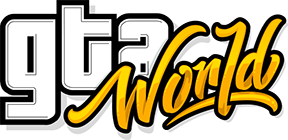


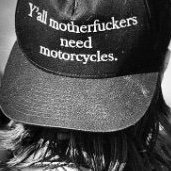
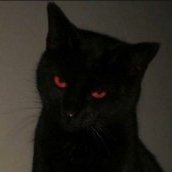
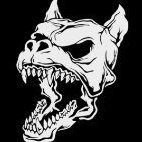
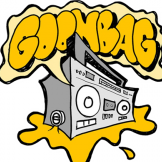
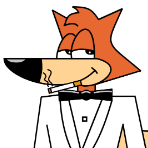
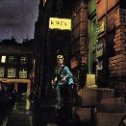
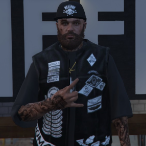

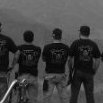

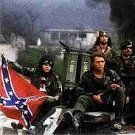




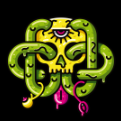


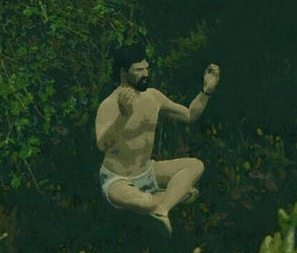



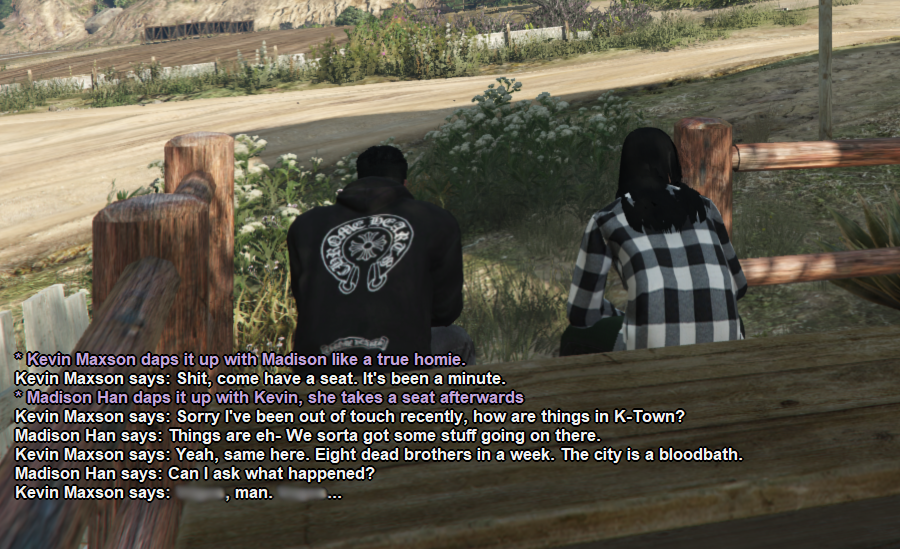
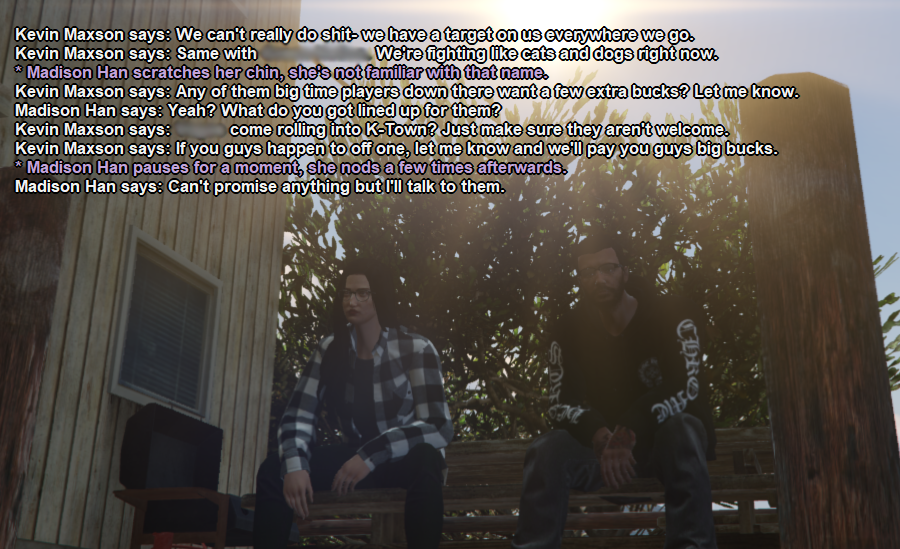

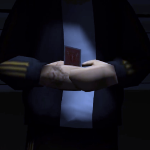
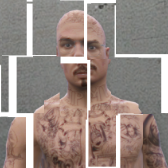
.thumb.jpeg.98d8570a5a25b8470a3ae3a117cd1e5f.jpeg)



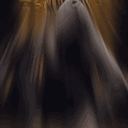







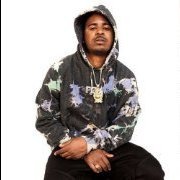




.thumb.jpg.77f4334ab5ecd0f21c48580bca739a5c.jpg)


